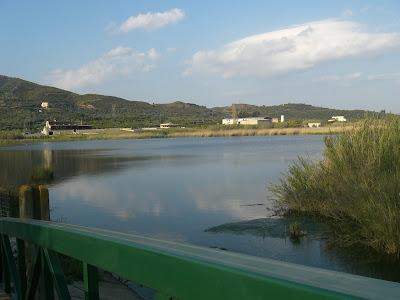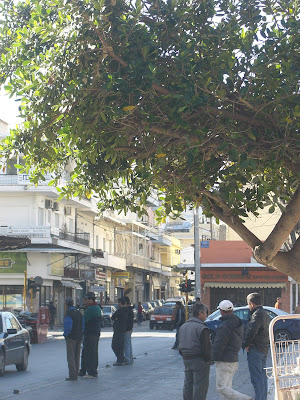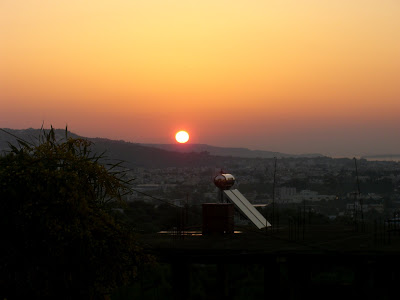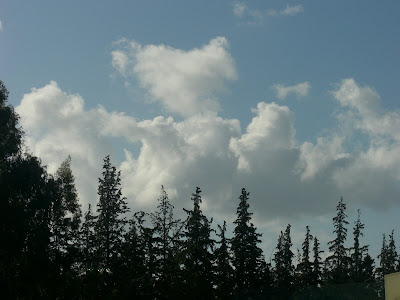
It's ABC Wednesday again and M is for
minaret.
On first sight, this photo doesn't look very spectacular - the sign reads (translated from the Greek) "BEWARE - MUNICIPAL WORKS - (name of construction group)." In the background there is St Nicholas church in the
Splantzia district, whose dome is being repaired, but what on earth is
a mosque's minaret doing on top of the church?
This was once the site of a church built by the
Venetians, dedicated to St Rokkos; along come the Turks, turning it into a mosque. When the Greeks finally took over the running of the island, they left the minaret as it was, standing above a church dedicated to St Nicholas. To the left of the church (but not visible in the photograph) stands a house which was once owned by a Jewish family. The main square on the left has always been a meeting point for the locals of the area, filled with tables and chairs for having a coffee or just relaxing. It's a pity these works have stopped the locals from enjoying each others' company in a central location away from their cramped apartments and tiny box houses in the narrow streets of this inner-city suburb right behind the eastern side of the
old harbour.
It is no wonder, with such a rich multi-cultural heritage, that the district of
Splantzia in
Hania, considered a poor people's suburb, is still as multi-cultural as ever. It is one of the few places in Hania where you will hear more foreign languages spoken rather than Greek, the language of the Greek nation. The people who live there are mainly economic migrants from Eastern Europe and North Africa, and there are shops owned by foreigners, mainly for the benefit of foreigners, including a second-hand shop, something still considered quite a novelty in a traditional, trendy summer resort town like Hania, on the island of Crete, in Southern Greece.
The minaret was almost ready to fall down; in fact, it was leaning to one side, clearly screaming out to the council that it was a danger to public safety. At one point, people started calling it the leaning tower of Hania. Eventually, though, the message got through, and the council restored the minaret by strengthening its structure; it is deemed of too significant historical importance to be allowed to fall into ruins.








